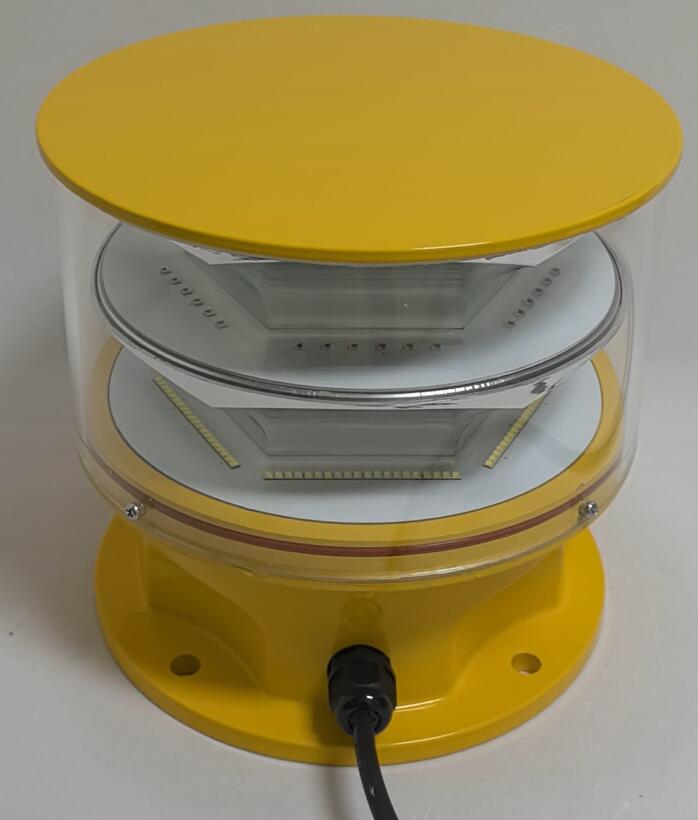
Aircraft warning lights play a critical role in aviation safety, ensuring that tall structures are visible to pilots during low visibility or nighttime conditions. The aircraft warning light standard encompasses guidelines and specifications designed to minimize risks while optimizing visibility. This article explores the essence of these standards, their implementation, and recent innovations in the field.
Defining the Aircraft Warning Light Standard
The aircraft warning light standard refers to a set of internationally recognized guidelines that dictate the requirements for lighting systems on tall structures such as buildings, towers, wind turbines, and cranes. These standards are developed to enhance visibility and prevent potential collisions, especially for structures extending into navigable airspace. Organizations such as the International Civil Aviation Organization (ICAO), Federal Aviation Administration (FAA), and European Union Aviation Safety Agency (EASA) provide detailed frameworks for compliance.

Key Specifications and Compliance
Aircraft warning lights must adhere to specifications regarding intensity, color, flash rates, and operational conditions.
|
aircraft warning light |
67y |
Light Intensity: Standards define minimum and maximum candela levels to ensure visibility across different weather conditions. High-intensity lights are generally used on taller structures.
Color Requirements: White, red, or a combination of these colors are typically prescribed. Red lights dominate nighttime use, while white lights are preferred for daytime operations due to their brightness.
Flash Rates: Flashing patterns vary but must remain consistent to ensure that pilots can identify obstacles reliably.
Durability: Aircraft warning lights must withstand extreme environmental conditions, including strong winds, rain, and freezing temperatures.
Non-compliance with these standards can result in penalties and, more critically, increased risks to aviation safety.
Evolving Technology in Aircraft Warning Lights
The aircraft warning light standard has evolved alongside advancements in technology. Modern warning lights now incorporate features that significantly enhance functionality and environmental compatibility.
LED Technology
Traditional incandescent lights are being replaced by energy-efficient LEDs. These lights offer extended lifespans, reduced energy consumption, and better performance in extreme weather. Their ability to emit light uniformly enhances compliance with visibility standards.
Smart Lighting Systems
Integration of smart systems is transforming warning light technology. Many modern systems now include GPS synchronization for coordinated flashing patterns, improving recognition by pilots. Some systems use radar or infrared sensors to activate lights only when an aircraft is nearby, reducing light pollution and energy usage.
Solar-Powered Options
Solar-powered aircraft warning lights provide a sustainable alternative to conventional systems. These lights reduce reliance on electricity grids, making them especially valuable in remote areas.
Addressing Environmental and Community Concerns
Aircraft warning lights, while essential for safety, can sometimes be a source of complaints, especially in residential areas. The brightness and continuous operation of traditional systems have prompted calls for more community-friendly solutions.
Light Pollution Reduction
Adjustable intensity systems that dim during periods of inactivity help mitigate light pollution.
Noise-Free Operation
Modern systems operate silently, addressing concerns about noise from older mechanical models.
Regulatory Harmonization
The global aviation sector benefits from unified aircraft warning light standards. However, variations in regional regulations can pose challenges for manufacturers and operators. Harmonizing standards across jurisdictions would streamline production processes and reduce costs. It would also ensure consistency in aviation safety, regardless of geographic location.
Future Trends in Aircraft Warning Light Standard
As aviation and urban development intersect increasingly, the future of aircraft warning lights lies in intelligent systems and sustainable practices. Advances in AI and IoT (Internet of Things) could lead to even smarter warning systems capable of adapting to real-time conditions. Additionally, collaboration between aviation authorities and environmental groups will drive innovations that balance safety with environmental impact.
The aircraft warning light standard is a cornerstone of aviation safety, offering a critical line of defense against aerial collisions. As technology continues to advance, these standards will adapt to incorporate new innovations, ensuring safer skies and a more sustainable future. By focusing on compliance, harmonization, and community-friendly practices, stakeholders can meet both regulatory requirements and societal expectations.